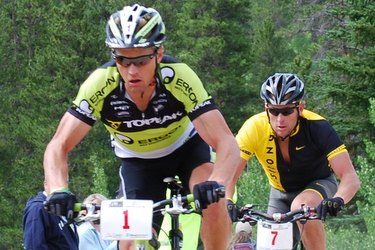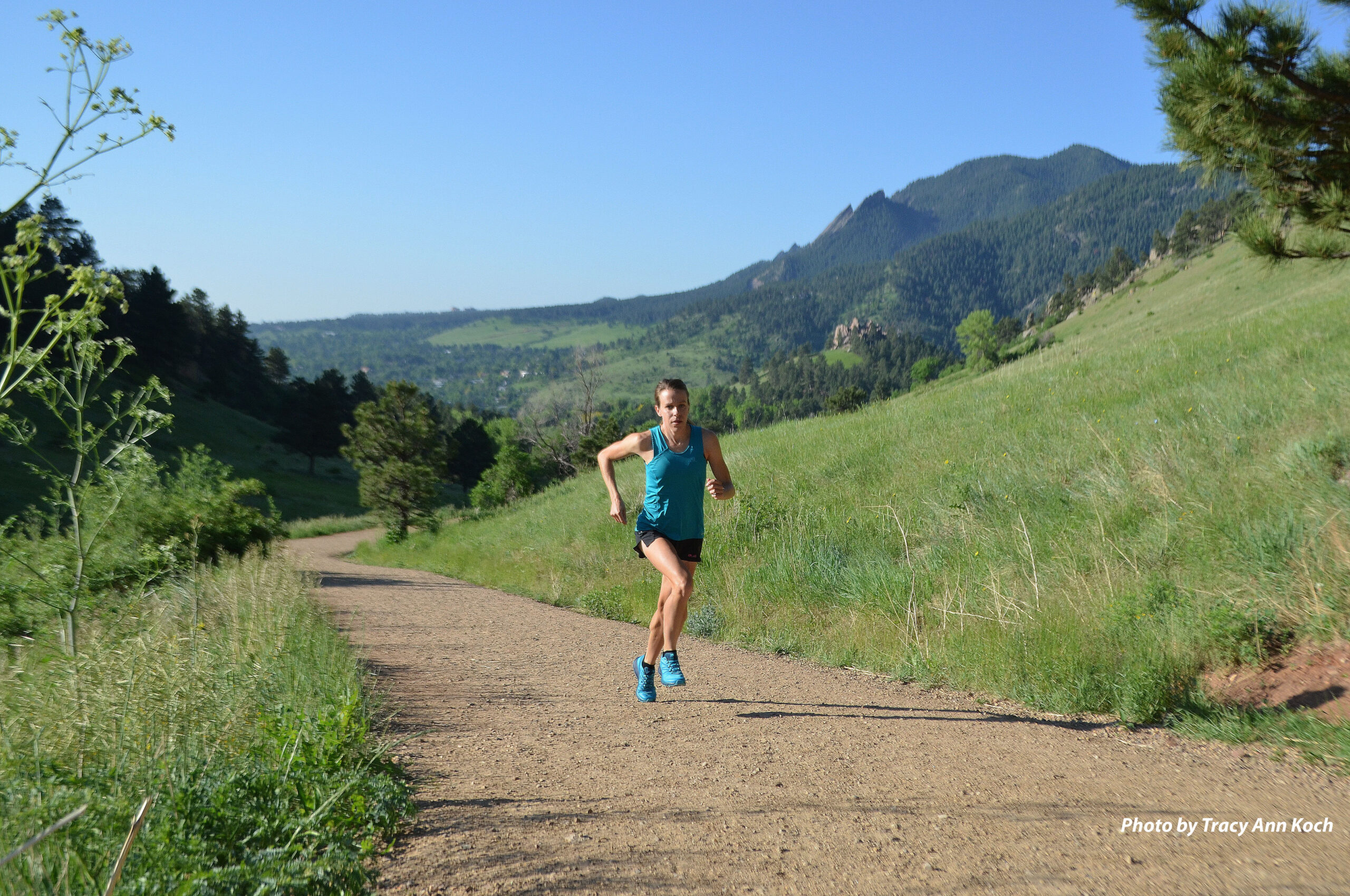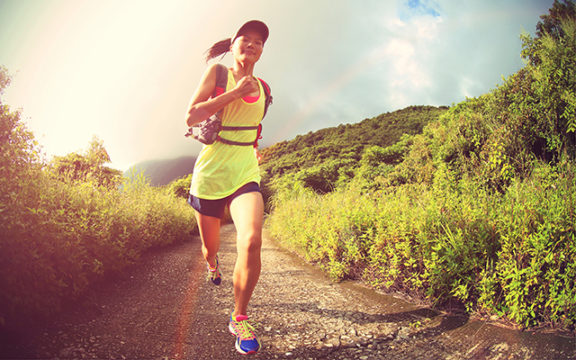Dispatches from Columbine: Become a Solid Mountain Biker With These 10 Tips
There is a coveted description for prowess and ability in any sport. It’s called being solid, and it absolutely applies to mountain biking.
Anybody who’s into our sport beyond the recreational level strives to be solid. What defines a solid mountain biker? A solid mountain biker will never compete on the World Cup circuit, isn’t sponsored, probably doesn’t get to ride every day and may not live near a trailhead.
But a solid mountain biker purposefully and persistently improves their skills so they are prepared to ride proficiently under most trail conditions; understands what it takes to keep up with other solid riders and is always on the invite list for those epic rides. A solid mountain biker understands the spectrum of skills needed and has worked on acquiring them by putting in purposeful and strategic time and mileage on the bike. Lots of time.
These ten tips range from macro, 30,000-feet-overhead generalities to very specific details. Of course, not all tips will be useful to all riders, but any aspiring solid mountain biker should find a helpful nugget or two.
Pre-Tip — Ride your mountain bike. The best way to improve is to ride your mountain bike a lot, plain and simple. The more trails you descend, the more hills you climb, the more roots you encounter, the more blind turns you navigate, the more times you brake, shift and corner, the more rutted jeep roads you traverse, the more… Okay, you get the idea. Get out there and ride your mountain bike!
Tip #1 — Cheat the system with chairlifts or legal shuttling. Where available, take advantage of lift-assisted riding at ski areas. Let’s use a downhill skiing analogy: How good would any skier be if they had had to hike to the top of the mountain for every single run? If you have to climb to get to every descent, you’re only going to descend so much. If you use lift-assisted riding to focus on your descending skills, you’ll rack up miles and thousands of vertical feet that you wouldn’t get otherwise. Even one day per year at a ski area could deposit around 10,000 vertical feet into your descending bank: braking, shifting, cornering, accelerating, feeling the bike roll under you. Do that five to ten times per year and you’ll be well on your way to having solid descending skills.
Tip #2 — Take a lesson. Let’s use another skiing analogy. Ski schools are foundational institutions at every ski resort. Mountain biking has lagged pitifully in this area but that is changing as many resorts embrace summer activities and feature mountain biking schools with certified and experienced instructors. There are plenty of lesson opportunities outside ski areas, too. Sharpen your Googling pencil and find a reputable mountain biking school or instructor in your area.
Tip #3 — Buy a book. There are some great books out there that will cut your learning curve immensely. When I taught my kids to ride, I came up with my own terms – such as “ready position” for the basic descending stance – and of course I emphasized the importance of understanding the difference between and best uses of the front and rear brakes. Kids are like skills sponges and they get better just by breathing and being near something, but once I began doing mountain bike clinics for adults, I recognized that I needed a system and vernacular for teaching adults in an effective way. I purchased Mastering Mountain Biking Skills, by Brian Lopes and Lee McCormack, and still lean on it heavily when I’m working with anyone. This book, and others like it, is filled with everything from the basics to advanced skills.
Tip #4 — Ride with mountain bikers who are better than you. By “better” I mean that they are either fitter, better bike handlers, or both. Pedaling a bike on smooth surfaces isn’t terribly difficult or technical and there are plenty of strong riders who can hammer the flats and climb really fast. But as soon as technical and challenging terrain is thrown into the mix, being a good bike handler suddenly becomes a premium. There are amazing bike handlers who cannot climb or who lack the endurance to successfully complete long rides. There are riders who can climb like goats, hammer the flats like the Dutch National Time Trial Team and ride all day, but who might take weeks to get through a technical section of trail. Your goal is to be solid in both fitness and bike handling. Ride with fitter riders, even if it means riding on the road. Likewise, go out with talented bike handlers and emulate what they do by following (for as long as you can, anyway) and by watching how they ride.
Tip #5 — Work on your fitness. Mountain biking is a sport that is very difficult to “take off the shelf” every now and then and enjoy. If you can only mountain bike on weekends, those weekend adventures will be much less than they could be. These rides can end up being counterproductive, frustrating and cut short by lack of stamina. As with any fitness or endurance-based sport, consistency is key. Try to pedal a bike, any bike, three to five times per week. Short and hard, even just 15 to 20 minutes, is infinitely better than nothing. Try a stationary bike, spin classes, road rides, cruiser bike rides — any consistent fitness effort will help you get the most out of your weekends in the dirt.
If you must travel for work, consider packing the gear you’ll need to ride exercise bikes in your hotel fitness center or the local club (such as shoes, pedals, a pedal wrench), or even for renting a bike (helmet, kit, etc.). While there is nothing like the specificity of cycling, other activities like running, hiking or swimming contribute to your fitness. I’ve done stair workouts in high-rise hotels while at trade shows or when traveling without a bike.
Tip #6 — Learn to read the trail. This is where mountain biking and road riding diverge. Sure, you need to pay attention while riding the road, watching for cars, other riders, road hazards, and changes in the paved surface. But that’s like nothing you will encounter when riding off-road. One reason technical mountain biking is so compelling is that it requires absolute and complete attention, focus and reaction. Your mind cannot wander while you’re dropping into the Powerline descent on the LT100 course or on a busy section of technical singletrack or a rock-strewn jeep road. You cannot brake, shift, corner or pedal effectively and efficiently unless you are able to quickly process what is coming at you, simultaneously decide what you need to do and execute. Not only do you need the skills, you need experience, knowledge and judgment all working together.
Tip #7 — Learn and use the proper stance for descending and technical riding. This is called “ready position” or “attack position.” In this position you stand on your pedals centered over the bike, not forward or back. Pedals are level, one foot forward, one foot back. (Everyone has a favored foot to be forward and there is no right or wrong choice. Do what feels natural. Hans Rey, an old friend, calls your forward foot the “chocolate foot.”) Knees are bent, elbows are bent and out slightly, back is flat, head is aligned above your stem, chin is up and eyes are fixed on the trail ahead (rather than down at your front wheel). Your grip on the bars is solid, not white-knuckled. Most of your weight is on your feet. Remember this: heavy feet, light hands. Allow the bike to move under you and roll.
Picture an English-style equestrian: They are standing on the stirrups, holding the reins and the horse in a balanced way and allowing the horse to move under them, using primarily their knees, but also their elbows to absorb the energy while the rest of the body stays as smooth and as calm as possible.
Tip #8 — Learn to shift properly. Shift gently, with finesse and good leg speed, always trying to stay on top of the gear. If you get behind your gear (meaning you’re mashing a lower cadence), it’s harder to shift because you’re not in a position to release some pressure from the pedals, nor will you have the advantage of quick RPMs to transfer the chain to a new gear. This is especially true for shifting with the front derailleur (applicable to those using triple- and double-chainring systems). In addition, don’t try to force a shift that you know you have blown and risk breaking something. Get off the bike and shift by lifting it and pedaling with your hand. This situation is likely when you’re suddenly faced with a climb that you weren’t prepared for; as a result, you didn’t shift and lost your momentum.
Anticipate which gear you need to be in and allow the system a moment of ease so that the chain can quickly, easily and safely move to the next ring, cog or both. You simply cannot get away with too many shifts under full power. It won’t work and soon enough, you’re going to break your chain or tear something up. Loud popping and pinging while shifting? Not good. You’re probably trying to shift with too much pressure on the pedals. I have put many miles on many mountain bikes and I have never had a chain break for no reason. Either I didn’t put it together correctly, or I blew a shift and bent a link. If you are breaking a lot of chains, you might want to either get a new mechanic or take a good hard look at how you shift your bike.
Lighten up. Shifting should not be aggressive. It should be smooth and reek of finesse. This combined with anticipation and a good spin will allow both you and your bike to reach the end of the ride.
Tip #9 — Learn the right way to use your brakes. Know the difference between your front and rear brakes and how to properly use each. Your front brake possesses most of the stopping power, but it’s also the brake that contributes the most to crashes. Why? Because the natural instinct when things go awry is to grab as much of both brakes as possible. This ends in a crash 999 times out of 1,000 because your front wheel stops dead, and if your handlebars don’t immediately turn 90 degrees, your front wheel will wash out or you’ll do a superman right over the front of the bike.
You can lock up your rear brake with fewer consequences than your front brake. Not knowing how to harness the immense power of the front brake makes some riders gun shy about using it. Shying away from using the front brake is a bad habit, and means you’re missing out on the performance of dual braking.
Get used to both your front and rear brakes in a safe environment, such as on grass with gentle slopes. Feel what happens when you use only one of the brakes with different braking pressures. Next, head out on some mellow trails and practice using only your front brake and then only your rear brake. Finally, put them together and feel the difference.
As much as you should practice braking, you should also get off your brakes and let the bike roll. Don’t get into the habit of “riding the brakes” (constantly applying pressure). Brake hard where you need to and then let off the brakes completely. Many descents are about reading the trail ahead and finding “braking zones,” spots where you will jump on the brakes, scrub your speed, then quickly get off your brakes and allow the bike to roll.
Tip #10 — Learn to corner: Find the berm. I learned this invaluable tip from Greg Herbold when I first began riding mountain bikes. Cornering is one of the most challenging aspects of mountain biking and it’s primarily related to traction. Cornering well on a paved surface requires some basic skills, but it’s hard to screw it up. Turning on loose, uneven, obstacle strewn, possibly steep, rutted surfaces is a much different game.
Greg said, “Wiensy, for cornering you always need to find the berm.” A prototypical berm is a built up, banked turn made of dirt and most often found on BMX tracks, moto tracks and purpose-built mountain bike trails. If you’ve ever used a berm, you know how helpful they are for cornering and also what happens if you get too high on a berm and try to corner on top or over the backside: Game over!
My first thought when he mentioned, “find the berm” was that I don’t ride on BMX tracks; I ride trails and jeep roads and there are no berms. He then showed me all the “berms” that are out there and why they are important.
Here is where the combination of reading the trail (Tip #7) and finding the berm comes into play. Berms assist with cornering because they are physical features in the surface of roads and trails that face the direction you want to turn, giving you that angled surface where you know your tires (primarily your front tire) will actually stick to the ground and allow you to turn. (By the way, the opposite of a berm, is a “fall-away” or any part of the surface that slopes away from the direction in which you want to corner. Fall-aways are not good for cornering traction.) Here are some examples of “berms”:
- Rounded, concave sections of trails or doubletracks often have awesome berms on the outside of turns. Use this surface for predictable traction while cornering. Conversely, you’ll have trouble and likely crash if you’re trying to corner on the inside of a trail or doubletrack like this (the fall-away.) Be careful not to catch a pedal on the sides of concave trails.
- Rocks (large or small) that are solidly embedded in the surface of a trail; roots; hardened tracks or ruts, etc., all can provide traction or a point of traction on which to change direction. However, where a true berm or sculpted trail offers a smooth, consistent surface for cornering, these features may only offer a momentary hookup. You’ll need to be ready to react to what follows immediately afterward, which won’t necessarily offer that same positive grip. Often, you can connect these features to corner effectively.
- Just a few degrees of positive bank will help. As you become more skilled at reading the trail and road surfaces ahead, you’ll notice subtle angles that will help you corner (and you’ll become proficient in detecting subtle angles in the wrong direction). Most riders cannot force their front tires to hook up on even a slight fall away, especially at speed and if it’s at all slippery, either dry or wet. You have to know to roll through these sections and wait for those angles and features where your tires can get that purchase.



